”GaiaMotherTree is the fountain and the place, the uterus and the meeting place, she is the shubu, kupixawa, oca – a place to be, breathe, feel the life inside us, connect to infinity and to others, meet, talk, sing, meditate, rest, pray, extend a hand, listen, love. She is the poetry, the sacredness and the joy of being alive.
Ernesto Neto




”My people have always preserved the identity that comes from our knowledge of nature—the language, the art, the songs, the dances, the way we work; so everything is one, everything is sacred, everything is nature, everything is God, everything has an owner, everything has a life.
Xana Bane Fabiano Sales Huni Kuin
”How do we live together? Who gets to be “we”? Under what terms? Under what conditions and who gets to decide?
Maya Kovskaya




”We are not just humans: our genetic code is the trace of all forms of life we’ve crossed in history before becoming human. Whenever we say "me" it is all these forms that speak in us. We are a legion and we will always be more and less than human.
Emmanuele Coccia
”It is a very special place, where a lot of ways cross. It’s a space of encounter. We might embrace each other, we might even embrace this tree.
Daiara Figeroua




”I thank Ernesto Neto for creating GaiaMotherTree where different systems of knowledge can meet and dialogue. He calls this “giving art a role of mediator between different cultures of knowledge”. Yes that seems right: mediating between different systems of knowledge takes art. And this is why this Assembleia feels like a beginning.
Jeremy Narby

How do we address one another across worlds? Can we reinvent and rebuild our polities based on respect for our differences, which are the very principles of life itself? Multiplying stories, knowledges, and traditions that multiply worlds means to renew our dedication to each other and the earth we dwell on. It is the earth that nourishes all life, that circulates through all life-forms, and makes each form different, beautiful, rich, and abundant. These earthly worlds that we are given the chance to build–if there is ever going to be a common world–the buenes vivires of multiple worlds must be constructed, day by day, in recognition of our failures and limitation and in celebration of all sacredness.
We are all invited to participate. We are welcome to take a place in this convivial maloca. We are called to come together and learn.

Taking Ernesto Neto’s project “Gaia MotherTree” and its integral “Assembleia”, with its multicultural delegates, as a starting point, we would like to further a global discourse on the role, that ancestral futures will play within the fight for the protection of our planet. Within a framework of migrating cultural ideas, projections, desires, techniques and misunderstandings, Gaia MotherTree explored how the collaborative efforts embodied in the project are at the core of the discourse on the futures of our species in relation to nature.
The purpose of this website is neither simply to share each expert’s own particular and situated knowledge, nor merely to facilitate the receipt of new information, but rather, the aim is to co-create as well as share, enact as well as grasp, and disseminate as well as internalize multiple knowledges, thus expanding each individual’s own perspective beyond the situated bounds of each of our respective singular contexts and traditions.
Neto’s installation “Gaia MotherTree” shaped a unique and eccentric communal space of gathering and reunion, designed to encourage both traditional and not-yet-defined practices of learning and engagement. The cosmogonic reversal of evolution, and the role of beings therein, invites a radical rethinking of what was called modern and rational for over four centuries. In the pluriversal explosion we are experiencing today, with the rising concern for ecology and climate change, we can no longer imagine nature being “outside,” outside of us, outside of the polis, outside of thinking – an outside that signifies the non-human, the other, the external. Within this context, indigenous communities have very much become a new avant-garde rather than the “blind spots” of modernity – as the guardians of life, these resilient communities have maintained deep connections to all forms of life. They are those who have resisted the forces of the global, and who have faced and learned the skills of survival and reinvention. Our futures have ancestral roots.

These ancestral futures will be key within a global movement of consientization. Paulo Freire (1921–1997) developed the concept of conscientization (conscientização), which could also be called critical consciousness or consciousness-raising, in a time of political crisis. Critical consciousness, according to Freire, focuses on achieving a global, transcultural understanding of the world, allowing for the perception and exposure of social and political contradictions. Freire’s ideas continue to be a call to action: “The more radical the person is, the more fully he or she enters into reality so that, knowing it better, he or she can transform it. This individual is not afraid to confront, to listen, to see the world unveiled. This person is not afraid to meet the people or to enter into a dialogue with them. This person does not consider himself or herself the proprietor of history or of all people, or the liberator of the oppressed; but he or she does commit himself or herself, within history, to fight at their side.”




